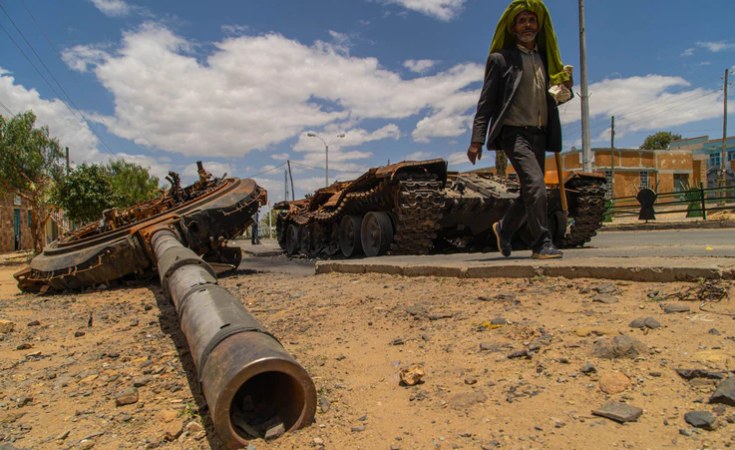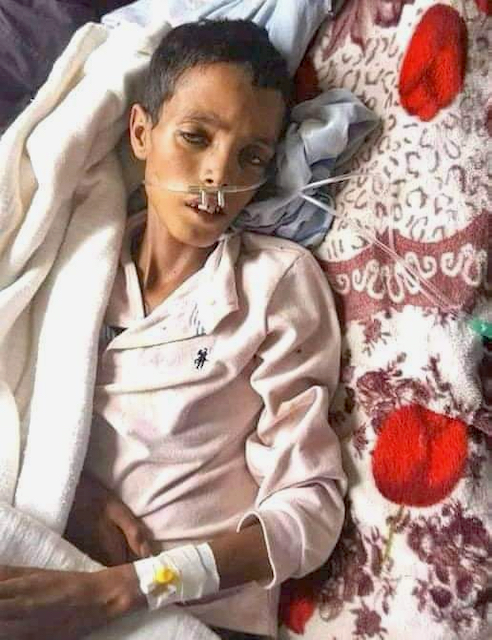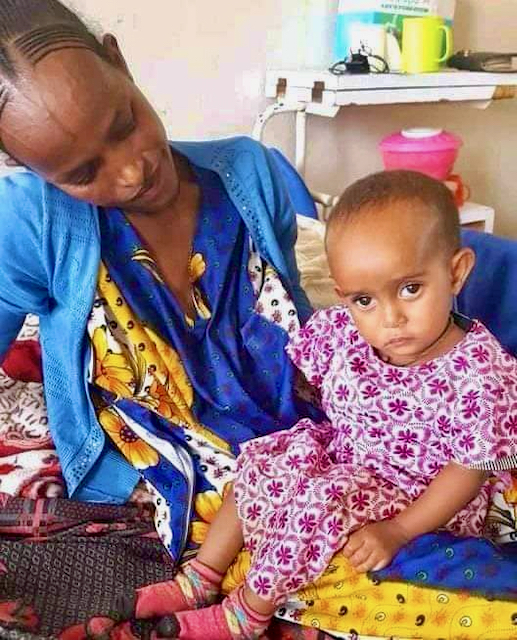Source: Just Security
With Deliberate Famine Threatening Millions, Tigray Demands Greater Action from the US
June 21, 2021
Ethiopia’s Prime Minister Abiy Ahmed began what he called a “law enforcement operation” against the Tigray Regional Government last November. Seven months later, it has turned into an internationalized civil war involving troops from neighboring Eritrea. The conflict has significantly destabilized the Horn of Africa. It has indirectly instigated a border war between Ethiopia and Sudan, as well as contributed to the escalation of rivalry between Egypt and Ethiopia over Ethiopia’s construction of the GERD dam on the Nile River. Numerous war crimes have been documented by rights groups. And the United Nations humanitarian chief Mark Lowcock just declared famine in Tigray and said that starvation was being used as a weapon of war by Ethiopia and Eritrea. As a consequence of this, an estimated 350,000 are currently living in famine conditions, and 2 million more are in danger of soon being in the same situation.
The war began on Nov. 4, 2020, but there is a disagreement on who initiated it. The Ethiopian government claims that it launched an offensive in retaliation to an attack on the Ethiopian army by the Tigray People’s Liberation Front (TPLF). While, the TPLF claims that the war was initiated by the federal government and that they were acting in self-defense. The TPLF had for weeks prior to the war warned that a joint Eritrean and Ethiopian military offensive was being planned. The African Union’s Commission on Human and People’s Rights concluded through their own investigations that it was indeed the Ethiopian federal government that initiated the war. Diplomats on the ground have also confirmed a military build-up by federal troops along the border several days before the war began. Crucially, both the Ethiopian prime minister, Abiy Ahmed, and officials from the Amhara Regional State have admitted that they had been preparing for war for two years and that their troops were mobilized on the border with Tigray and ready to attack before the war, lending credence to the Tigrayan claim.
The three actors that invaded Tigray – the Eritrean military, Ethiopian federal forces, and militia of the Amhara Regional State — had individual as well as overlapping objectives. The Eritrean government wanted revenge against the Tigray People’s Liberation Front (TPLF). It had been the dominant force in the Ethiopian People’s Revolutionary Democratic Front (EPRDF) government, which led efforts to diplomatically isolate Eritrea in the past. The Amhara militia’s main strategic objectives were territorial expansion and annexation of western and southern Tigray, which it claims is historically theirs, while Abiy’s main objective was the elimination of obstacles for his autocratic power consolidation. After he indefinitely postponed elections in June 2020, he imprisoned many leading opposition leaders while other dissidents were killed. Harassment of opposition parties has also made it difficult to operate and eventually led many to boycott the political process. The TPLF, which controlled a regional state of its own, was the only force with the institutional resources to resist Abiy’s centralization efforts. For example, when he postponed the elections, the TPLF proceeded to hold local elections in defiance.
The motives of these three actors converged on the desire to wage war on an entire community and collectively punish civilians in Tigray. In addition to numerous incriminating statements, the way the war was executed illustrates that civilians and civilian infrastructure were central targets of the war. One example is the use of rape as a weapon of war, which was, from the outset, widely used by the Amhara, Eritrean, and Ethiopian troops. The sexual violence often takes the form of gang rapes in groups as many as 20 to 30 men and often involves torture, leaving the assaulted women physically and mentally devastated. The latest official estimate of women needing treatment after sexual violence during the war was 22,500, but this is likely to be the tip of the iceberg.
Amhara militias also have ethnically cleansed around 1 million people from western Tigray. The troops have also systematically vandalized health, education, and economic infrastructure. Another devastating crime against civilians in Tigray is the use of starvation as a weapon of war. Eritrean and Ethiopian troops are systematically destroying farmers’ agricultural equipment and seeds; preventing them from farming; and obstructing the work of humanitarian workers in order to prevent food assistance from reaching the needy. Currently, 5.2 million or 91 percent of Tigrayans need emergency food, according to the United Nations, and they face a serious risk of famine. Given the level of intentional destruction, some analysts and politicians, including Sen. Patrick Leahy (D-VT), have claimed the violations may constitute genocide.
Eritrean Involvement
The involvement of Eritrea in the war has become one of the most controversial aspects of the war, and its withdrawal of troops is a key demand by the United States and the international community. For months, both Ethiopian and Eritrean authorities vehemently denied accusations of Eritrea’s involvement, much less the way they were conducting the war. On March 23, however, Abiy admitted that Eritrean forces have been in Tigray since the war began. After months of denial, Eritrea too recently confirmed that its troops are fighting in Tigray.
Eritrean forces are implicated in most of the atrocities committed in Tigray, including the massacre in the Dengelat church, another massacre and massive looting in Axum, widespread sexual violence, prohibiting Tigrayans from farming their land, and blocking relief efforts. It is imperative to note that the Abiy administration has never protested Eritrea’s involvement. In fact, multiple reports indicate that Ethiopian federal forces and Eritrean forces conduct joint military operations. In light of these facts, it seems likely that Ethiopia invited Eritrea to participate in the war, and may have helped it operate covertly. In any event, it is evident that Ethiopia created conducive conditions for Eritrean troops to commit atrocity crimes with absolute impunity. That said, the extent to which Ethiopia currently has leverage over the Eritrean army is questionable. Such utter abdication of duty makes the case for international responsibility to protect civilians in Tigray compelling.
The U.S. Response to the Tigray Crisis
The Biden administration spent its first five months in office trying to convince Abiy to change course, a testament to how valuable the United States sees its partnership with Ethiopia. For two decades Ethiopia was the United States’ main security partner in the Horn of Africa. There were also numerous attempts by the United States and some European States to raise the Tigray crisis at the U.N. Security Council, but they failed to produce any meaningful outcome due to opposition from Russia and China. The international organizations that had the mandate and responsibility to act abdicated their responsibility. The chairperson of the African Union Commission, Musa Faki, embraced the war and sided with the Ethiopian government early on in the conflict, while U.N. Secretary General António Guterres has not been willing to take a strong public stand against the conflict. The European Union was the only actor that confronted Abiy by withholding some of its development assistance.
When the U.N. Security Council refused to seriously engage on the topic, the Biden administration focused on working directly with Ethiopia. Biden first sent Sen. Chris Coons (D-CT) as emissary and later appointed Jeffrey Feltman as special envoy to the Horn of Africa to persuade Abiy to withdraw Eritrean troops from Tigray and allow unhindered humanitarian access to civilians. This policy achieved little, however, and it gave Abiy more time to commit atrocities and allowed the conflict to turn deeper into a humanitarian and regional crisis.
The failure of this policy was mostly due to the belief that the Ethiopian government would be susceptible to diplomatic overtures. Historical evidence suggests, however, that governments that perpetuate systemic mass atrocities on this scale rarely allow themselves to be persuaded to halt their violent campaigns by non-coercive means. For example, the Cambodian genocide ended when the Khmer Rouge was overthrown by Vietnam, while the Bosnian genocide was halted through NATO’s military campaigns.
For six months, Abiy successfully took advantage of the widely held view amongst Western governments that Ethiopia –due to its role in regional counterinsurgency and peacekeeping — is too important of a strategic partner to be sanctioned or even confronted. He used this attitude amongst Western diplomats to buy time. From the beginning of the war, he constantly made promises he didn’t keep – first, it was the withdrawal of Eritrean troops, then unfettered access to humanitarian aid. Each lie bought him some time, and rarely did the deception or atrocities have any consequences.
After months of patient, but ineffective diplomacy, on May 24, U.S. Secretary of State Antony Blinken announced that visa bans would be applied against Ethiopian and Eritrean officials, members of the Amhara militia, and the TPLF for obstructing efforts to end the conflict in Tigray. Other sanctions included restrictions on development and security assistance to Ethiopia. The United States has also asked multilateral development banks to suspend funding to Ethiopia. The scale of the crimes and the failure of diplomatic overtures meant that the only remaining option was coercive diplomacy.
The main impact of the sanctions is, however, their symbolic effects. They convey the message that Ethiopia’s war crimes and crimes against humanity in Tigray are not acceptable.
Abiy’s first reaction to the U.S. sanctions was to rally the country behind the flag. The Ethiopian government has also made thinly veiled threats that it intends to look to China and Russia for alternative partnerships. This is, however, only a bluff. Ethiopia is a highly aid-dependent country, and it is extremely unlikely that China or Russia would be willing to provide the same level of development assistance that Europe and the United States have provided. Abiy’s current tactic seems to be to buy enough time to set off a major famine, in the hopes that hunger will end the Tigrayan insurgency. But, as the history of insurgencies in Ethiopia indicate, the armed resistance is likely to continue despite the famine.
What More Should Be Done
To be effective, the U.S. government needs to expand sanctions and intensify pressure on the Ethiopian and Eritrean governments. An incremental increase in pressure is counter-productive. Eventually, Abiy will have to politically engage his opponents; the purpose of outside pressure should be to make this happen before the famine kills hundreds of thousands of civilians and before the State collapses. It is important to disable his war machinery as early as possible.
For this to happen, the Biden administration needs to mobilize and coordinate a common front together with European and African States. While the EU has taken a strong stance, individual European countries, like France, Italy, and Germany, have been reluctant to confront Abiy on his human rights record. There needs to be a concerted effort to use financial assistance as leverage. Assets of key individuals should also be frozen through the Global Magnitsky Act.
While the U.N. Security Council should impose an arms embargo on the Ethiopian and Eritrean governments, action at the Council still seems unlikely given Russian and Chinese intransigence. As a second-best option, the U.S. government should impose an arms embargo on Eritrea and Ethiopia. As the United States is not a major arms trading partner for either Ethiopia or Eritrea, this would only be effective if done in conjunction with European States and by using secondary sanctions to deter arms exporters from trading with these countries. Over time, this would reduce Abiy’s access to weapons and ensure that his wars with Tigray, Oromia, and Sudan cannot continue indefinitely. It would also further isolate him diplomatically. So far, Abiy has rejected all calls for dialogue. Reduced access to weapons would eventually compel him to pursue a political solution. An arms embargo would also help disable Eritrean President Isaias Afwerki’s war machinery and end his destabilization of the Horn of Africa. The sanctions should be lifted only when a verification mechanism for the withdrawal of Eritrean, Amhara, and Ethiopian troops from Tigray has been put in place on the ground, and when a formal cessation of hostilities and a peace-process has begun.
More than five million people are categorized as needing emergency food assistance by the U.N., and with the current trajectory, most of these will soon be in famine conditions. If Abiy’s government is not stopped, the casualties of the Tigray war will, within a few months, exceed that of Rwanda’s genocide. If this is to be averted, the Biden administration needs to establish redlines and deadlines for compliance. If there is a continued refusal to comply with demands to end the conflict and allow humanitarian access to civilians in need, then the option of humanitarian military intervention merits serious consideration.
The U.N. Security Council is unlikely to support such measures, but the heavy humanitarian cost of inaction should be unacceptable. A NATO or other multilateral mission to push Eritrean troops out of Tigray and provide safe passage for humanitarian access may be the only option left to prevent the politically engineered famine from killing millions. The norm of Responsibility to Protect was formulated precisely for this type of situation. While there is little appetite for humanitarian intervention in the West, the alternative will be to allow the deliberate starvation of millions of people. We note that for a host of reasons, the United States has not clearly embraced the legality of humanitarian intervention absent Security Council authorization (although a few of its close allies, like the UK, have done so). We also suspect that the Biden administration is unlikely to change the long-standing U.S. legal view. But if the African Union, NATO, or the United States with a coalition of partners, were to intervene in Ethiopia in such circumstances, while it might be viewed as unlawful, it would not be unprecedented. Given the severity of the humanitarian situation in Tigray, such action could furthermore be morally justified. As the International Commission on Intervention and State Sovereignty has argued, if “the Security Council fails to discharge its responsibility [to protect] in conscience-shocking situations crying out for action, then it is unrealistic to expect that concerned states will rule out other means and forms of action to meet the gravity and urgency of these situations.”
Beyond Tigray, if Abiy does not commit to a political process with his opponents, it is plausible that the Ethiopian State — with its 120 million inhabitants — will collapse. This would destabilize the Horn of Africa and the Red Sea, through which a substantial share of the world’s trade passes every year. Pressure by the United States and its partners may therefore play an important role in reversing this trajectory before it’s too late.






























